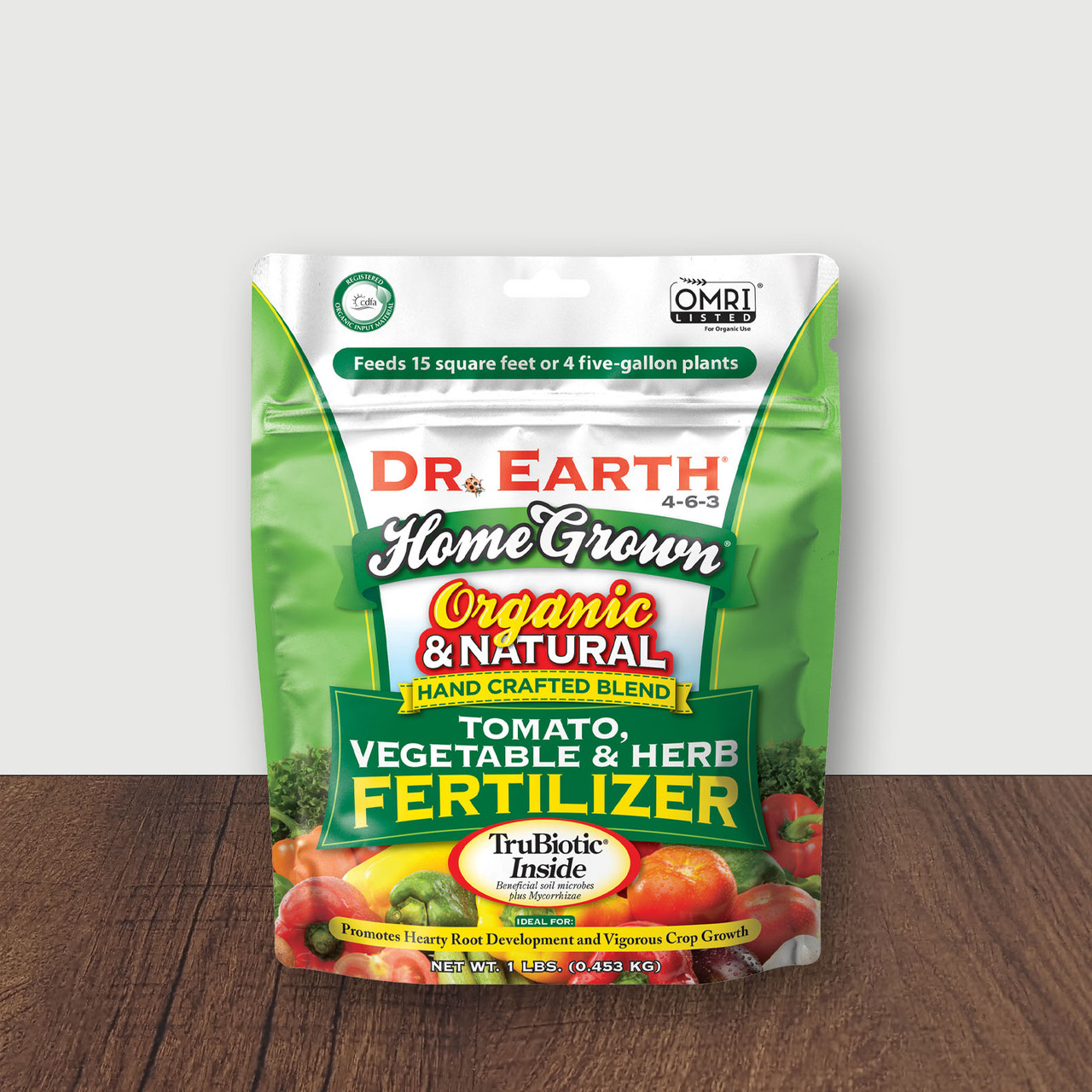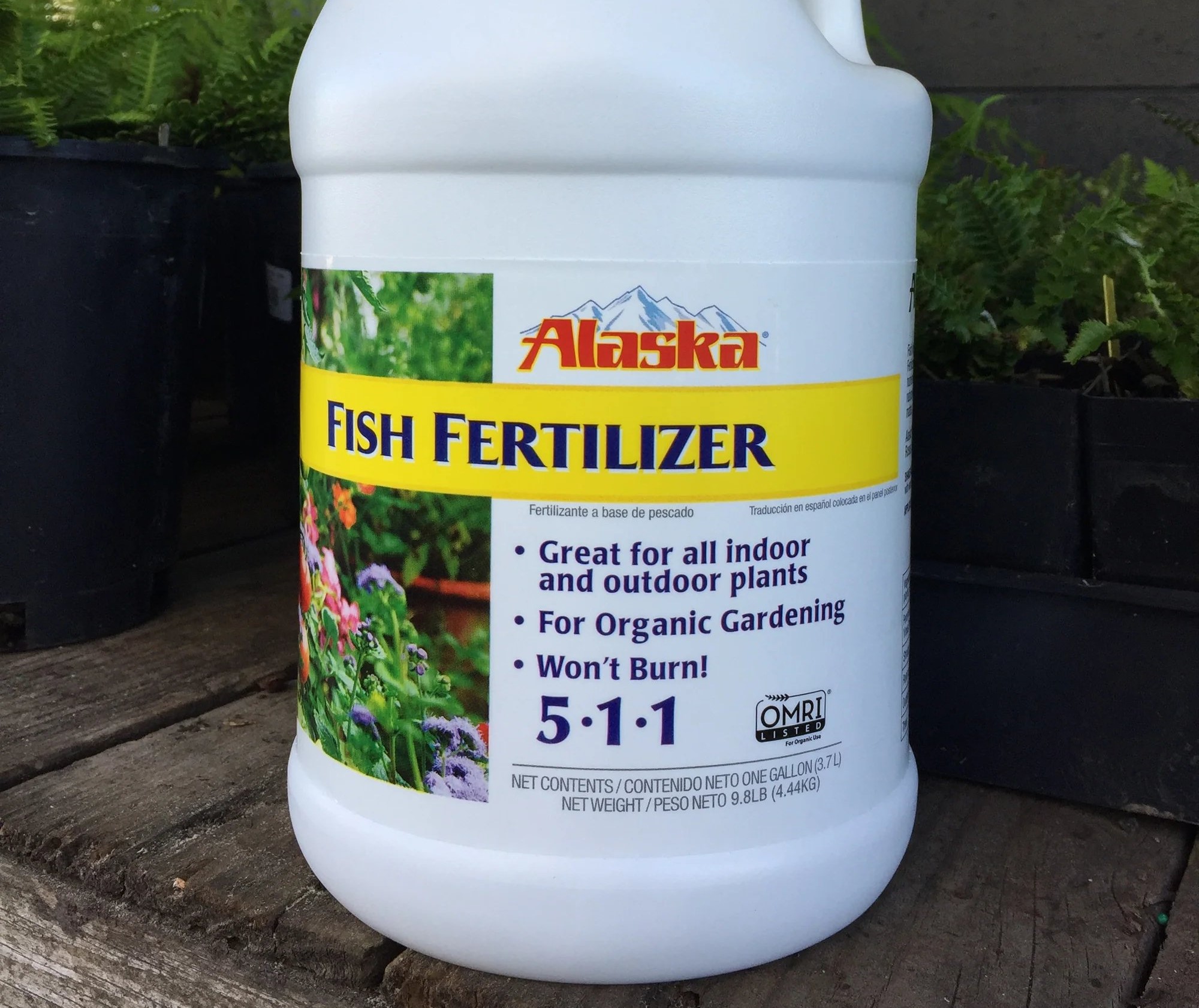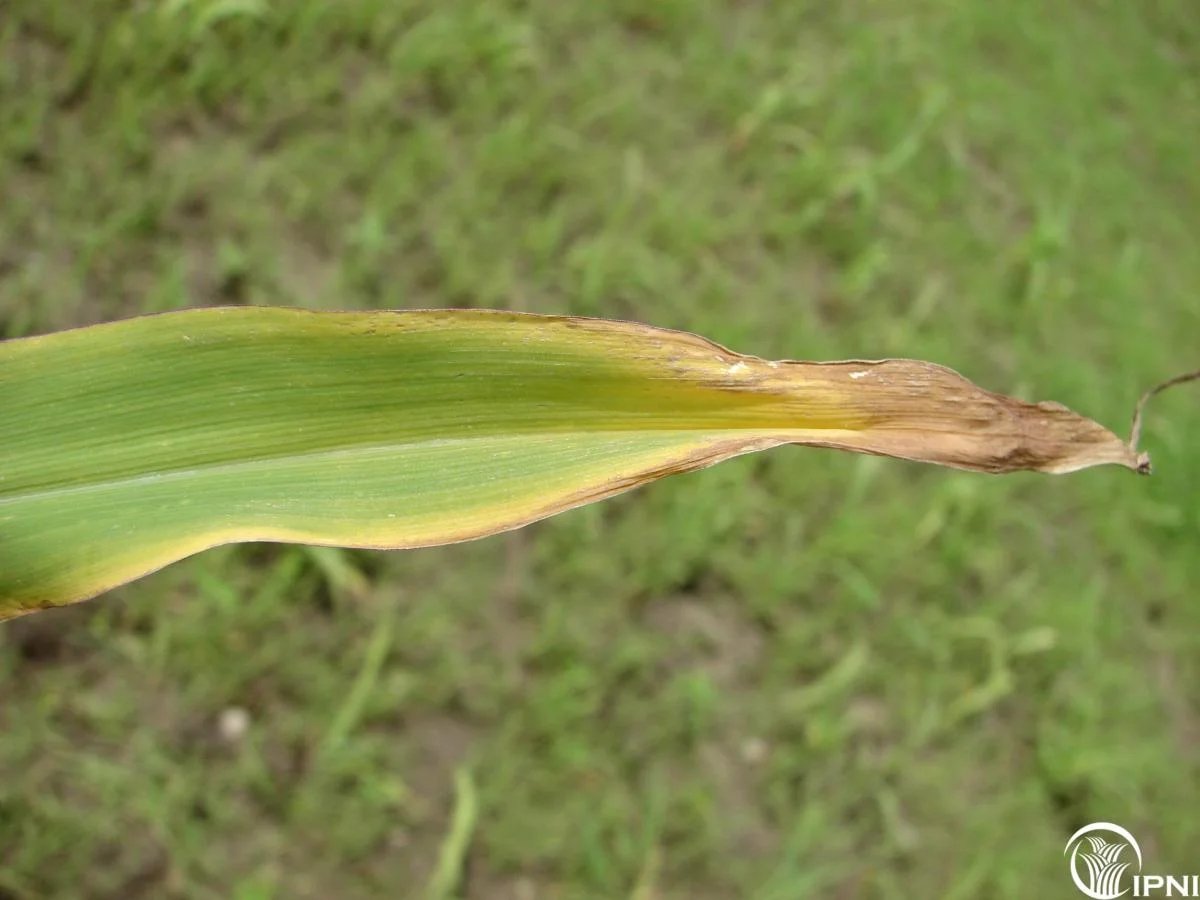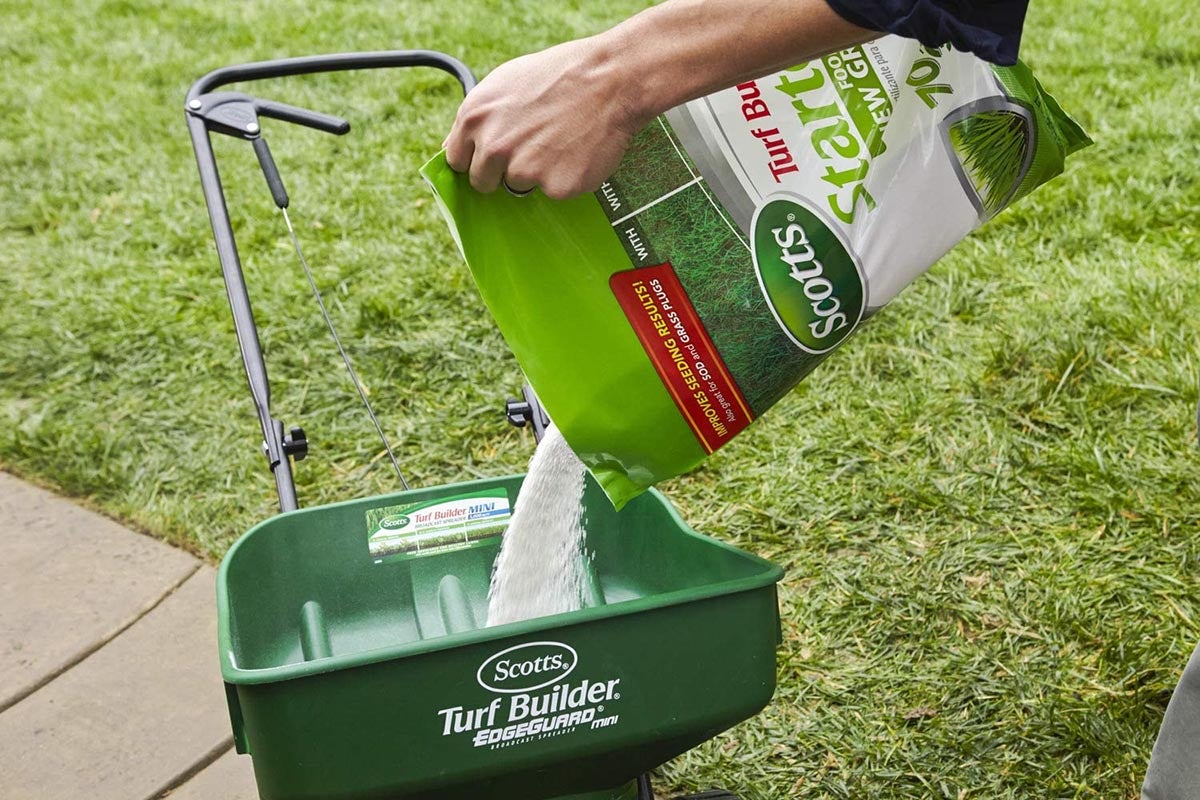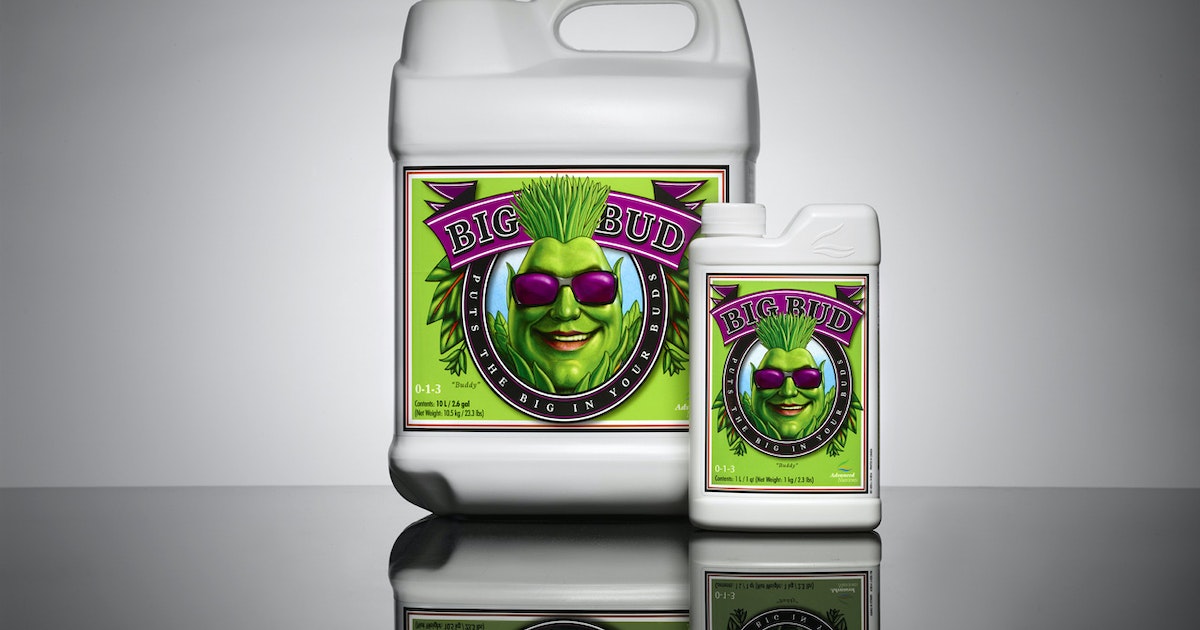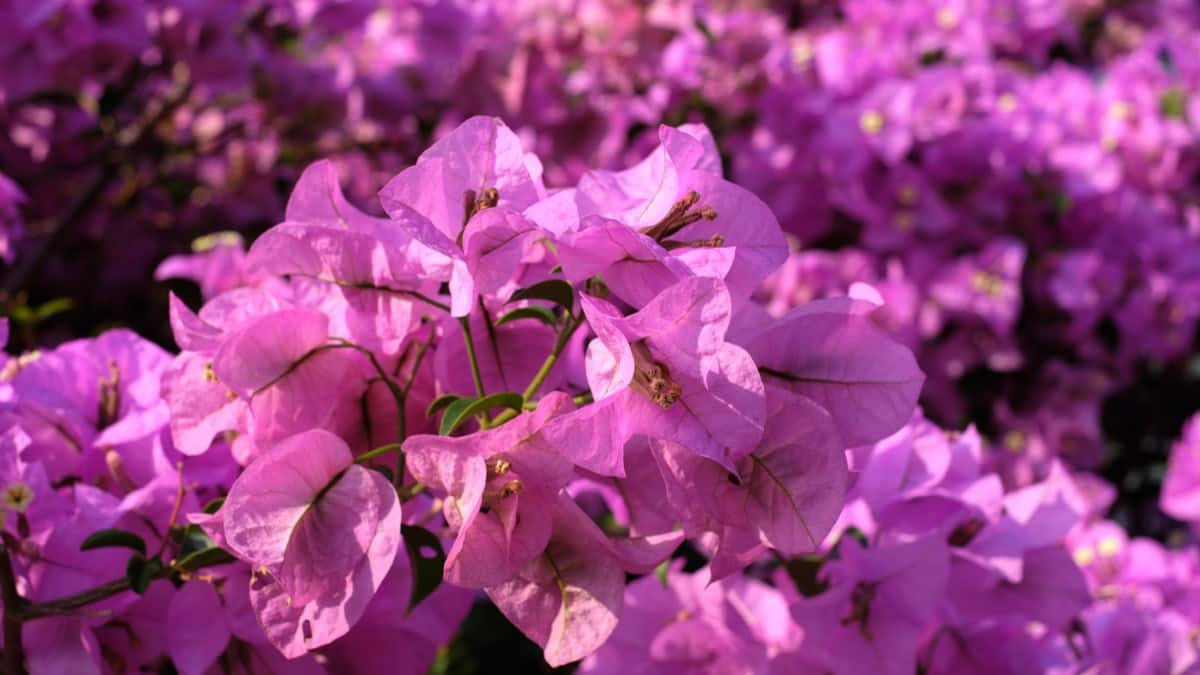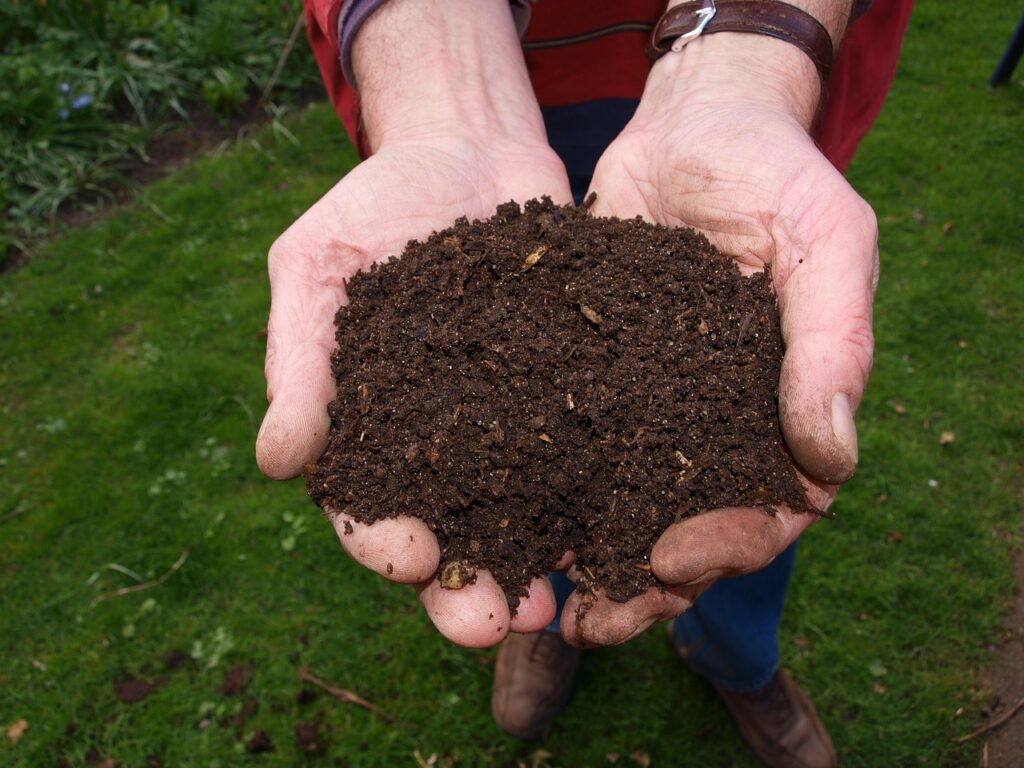Home>Gardening Basics>How To Use 16-16-16 Fertilizer
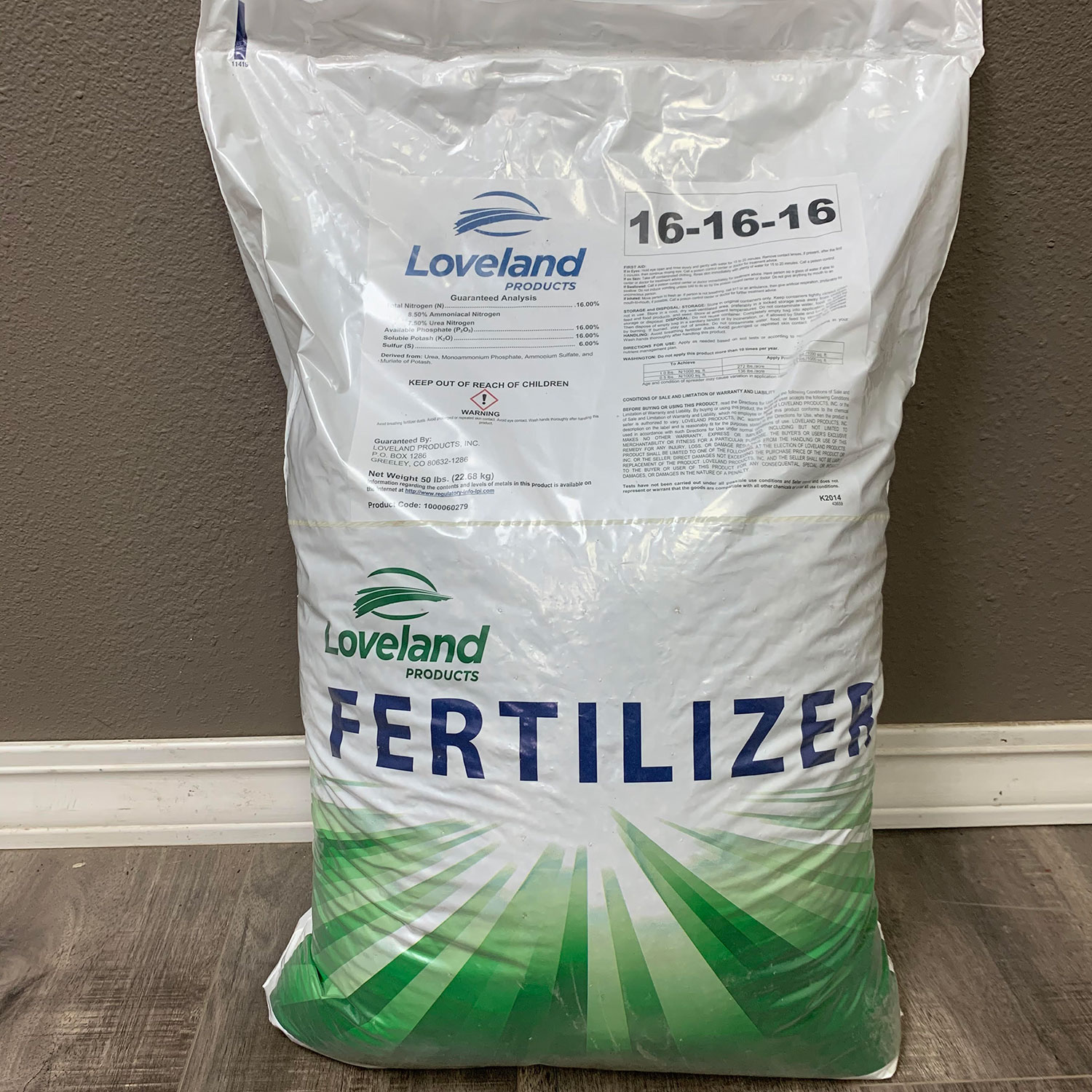

Gardening Basics
How To Use 16-16-16 Fertilizer
Modified: January 22, 2024
Learn how to use 16-16-16 fertilizer with our comprehensive guide. Get started with step-by-step instructions and maximize your plant's growth and health.
(Many of the links in this article redirect to a specific reviewed product. Your purchase of these products through affiliate links helps to generate commission for Chicagolandgardening.com, at no extra cost. Learn more)
Table of Contents
Introduction
Welcome to the world of gardening! Whether you’re a seasoned horticulturist or embarking on your first green-thumb adventure, fertilizer is an essential tool in nurturing healthy plants. One popular fertilizer option that you may come across is 16-16-16 fertilizer. But what exactly is it? 16-16-16 fertilizer, often referred to as “balanced fertilizer,” is a type of fertilizer that contains equal parts of three essential nutrients: nitrogen (N), phosphorus (P), and potassium (K). These three nutrients are commonly known as NPK and play a vital role in promoting plant growth and development. In this article, we will explore the benefits of using 16-16-16 fertilizer, how to properly apply it, as well as some dos and don’ts to keep in mind. Whether you’re tending to your backyard garden or maintaining a lush landscape, understanding how to use 16-16-16 fertilizer effectively can help you achieve the vibrant and thriving plants you desire. So, grab your gardening gloves and let’s dive into the wonderful world of 16-16-16 fertilizer!
What is 16-16-16 Fertilizer?
16-16-16 fertilizer is a type of balanced fertilizer that contains equal proportions of three essential nutrients: nitrogen (N), phosphorus (P), and potassium (K). These nutrients are represented by the three numbers on the fertilizer package, which indicate the percentage of each nutrient in the formula.
The first number, nitrogen, is responsible for promoting healthy leaf and stem growth. It plays a crucial role in enhancing the overall greenness and vitality of plants. Phosphorus, the second number, aids in root development, flower production, and overall plant vigor. Lastly, potassium, the third number, contributes to disease resistance, strong root systems, and the overall health and strength of the plant.
16-16-16 fertilizer is often hailed as a balanced fertilizer because it provides equal amounts of these three important nutrients. This balanced formulation ensures that plants receive a well-rounded supply of nutrients for all their growth stages.
Whether you’re growing flowers, vegetables, or trees, 16-16-16 fertilizer can be used on a variety of plants to foster healthy growth. It is particularly beneficial for plants that require an equal intake of nitrogen, phosphorus, and potassium, creating an ideal environment for them to thrive.
When using 16-16-16 fertilizer, it’s important to follow the instructions on the package and be mindful of the specific needs of your plants. Different plants have different nutrient requirements, so it’s always a good idea to research the specific nutritional needs of the plants you are caring for.
Now that you understand what 16-16-16 fertilizer is and how it provides a balanced combination of essential nutrients, let’s explore the benefits of using this type of fertilizer in your garden or landscape.
Benefits of Using 16-16-16 Fertilizer
Using 16-16-16 fertilizer offers several benefits that can contribute to the overall health and success of your plants. Let’s take a closer look at why this balanced fertilizer is a popular choice among gardeners:
- Promotes balanced growth: As a balanced fertilizer, 16-16-16 provides equal amounts of nitrogen, phosphorus, and potassium. This balanced nutrient combination ensures that plants receive the right proportions of each element, promoting overall balanced growth and development.
- Enhances plant vigor: The nitrogen content in 16-16-16 fertilizer stimulates lush, green foliage by promoting chlorophyll production. This results in healthier and more vibrant plants with robust leaf and stem growth.
- Boosts root development: The phosphorus in 16-16-16 fertilizer plays a crucial role in supporting strong root growth. It aids in the development of a robust root system, allowing plants to efficiently absorb water and nutrients from the soil.
- Encourages flower production: The phosphorus and potassium in 16-16-16 fertilizer work together to promote abundant flower production. This is particularly beneficial for flowering plants, as it helps them produce more blooms and prolongs the flowering period.
- Strengthens plant resistance: The potassium content in 16-16-16 fertilizer contributes to enhanced disease resistance and overall plant strength. It helps plants withstand environmental stresses, such as drought or extreme temperatures, leading to healthier and more resilient plants.
- Provides balanced nutrition for various plants: 16-16-16 fertilizer can be used on a wide range of plants, making it a versatile fertilizer option. Whether you’re growing vegetables, fruits, flowers, or trees, this balanced fertilizer can meet the nutrient needs of different plant types effectively.
- Convenient and easy to use: 16-16-16 fertilizer is readily available in garden centers and is easy to apply. It can be used as a granular fertilizer for general application or dissolved in water for foliar feeding. Its versatility and accessibility make it a convenient choice for gardeners of all skill levels.
By using 16-16-16 fertilizer, you can ensure that your plants receive a balanced supply of essential nutrients, leading to healthier, more vigorous growth and overall improved plant performance.
How to Apply 16-16-16 Fertilizer
Properly applying 16-16-16 fertilizer is key to maximizing its benefits and ensuring that your plants receive the necessary nutrients. Here are some steps to help you effectively apply this balanced fertilizer:
- Read the instructions: Start by carefully reading the instructions provided on the fertilizer package. This will give you specific guidelines on the recommended application rate and frequency for different types of plants.
- Prepare the area: Before applying 16-16-16 fertilizer, make sure the soil is moist. Water the area a day or two prior to fertilizing to ensure proper nutrient absorption.
- Calculate the application rate: Determine the appropriate amount of fertilizer to use based on the instructions and the size of the area you’re fertilizing. Follow the recommended application rate to avoid over- or under-fertilizing your plants.
- Apply evenly: Sprinkle the 16-16-16 fertilizer evenly across the soil surface or around the base of the plants. For larger areas, you may use a broadcast spreader for more uniform coverage.
- Avoid direct contact with the plant: Ensure that the fertilizer does not come into direct contact with the foliage or stems of the plants. This can potentially burn the plant tissues.
- Water the area: After applying the fertilizer, gently water the area to help the nutrients reach the plant’s root zone. This also helps dissolve the granules and activate the fertilizer.
- Keep the area well-maintained: Throughout the growing season, continue to water and care for your plants according to their specific needs. This will ensure optimal nutrient uptake and promote healthy growth.
It’s important to note that the frequency of application will vary depending on the specific requirements of your plants and the recommendations on the fertilizer package. Some plants may need more frequent applications, while others may require less. Always follow the instructions and monitor the condition of your plants to determine if additional applications are necessary.
By following these steps, you can effectively apply 16-16-16 fertilizer and provide your plants with the balanced nutrition they need for optimum growth and development.
Dos and Don’ts of Using 16-16-16 Fertilizer
While using 16-16-16 fertilizer can greatly benefit your plants, it’s important to keep in mind some dos and don’ts to ensure its effective and safe application. Here are some guidelines to follow:
- Do read and follow the instructions: Always read the instructions provided with the 16-16-16 fertilizer and follow the recommended application rates and frequency for different plants. Each fertilizer brand may have specific guidelines, so it’s essential to adhere to them.
- Do apply when the soil is moist: Apply 16-16-16 fertilizer when the soil is already moist, either after rainfall or watering. This will help the nutrients penetrate the soil and reach the plant roots more efficiently.
- Do apply evenly: Ensure an even distribution of the fertilizer around the plant’s root zone or across the designated area. This will provide a balanced supply of nutrients to all the plants and help prevent patchy growth.
- Do water after applying: After applying the fertilizer, water the area gently to help activate the nutrients and ensure they are absorbed by the plants. This step aids in preventing nutrient runoff and enhances nutrient uptake.
- Do store the fertilizer properly: Keep the 16-16-16 fertilizer in its original packaging and store it in a dry, cool place away from direct sunlight. Proper storage helps maintain the fertilizer’s effectiveness and extends its shelf life.
- Don’t apply too much fertilizer: Avoid over-fertilizing your plants as excessive nutrients can lead to nutrient imbalances, burnt roots, or even plant death. Follow the recommended application rates to ensure the health of your plants.
- Don’t apply during extreme weather conditions: Avoid applying 16-16-16 fertilizer during periods of extreme heat or drought. The stress on the plants may cause them to be more susceptible to fertilizer burn. Wait for more favorable weather conditions before fertilizing.
- Don’t apply to waterlogged or stressed plants: Refrain from applying the fertilizer to waterlogged or unhealthy plants. Wait until the plants recover or the soil drainage improves before fertilizing.
- Don’t apply directly to the leaves: Avoid direct contact between the fertilizer and the foliage of the plants. This can cause burns and damage to the leaves. Instead, apply the fertilizer around the base of the plants.
- Don’t forget to clean up: After applying the fertilizer, make sure to clean up any spills or excess fertilizer to prevent it from contaminating nearby water sources or harming beneficial organisms.
By following these dos and don’ts, you can ensure the safe and effective use of 16-16-16 fertilizer, promoting optimal plant growth and minimizing any potential risks to your plants and the environment.
Frequency of Application for 16-16-16 Fertilizer
The frequency of applying 16-16-16 fertilizer will vary depending on several factors, including the specific needs of your plants, the soil conditions, and the recommendations provided by the fertilizer manufacturer. Understanding the appropriate frequency of application is crucial for maximizing the benefits of this balanced fertilizer. Here are some guidelines to help you determine when and how often to apply 16-16-16 fertilizer:
Plant Type: Different plants have unique nutrient requirements and growth rates. Some plants, such as annual flowers and vegetables, may benefit from more frequent applications. On the other hand, established trees and shrubs may require less frequent fertilization. Research the specific nutritional needs of the plants you are growing to ensure you are meeting their requirements.
Plant Age and Growth Stage: Young plants and seedlings often have higher nutrient demands as they establish their root systems and develop. They may require more frequent applications of 16-16-16 fertilizer during their early stages. As the plants mature, you can reduce the frequency of fertilization. Consider the growth stage of your plants when determining the timing and frequency of fertilizer application.
Soil Conditions: The nutrient content of the soil can affect the frequency of fertilizer application. If your soil is nutrient-rich or has previously received ample amounts of organic matter, you may not need to apply 16-16-16 fertilizer as frequently. Regular soil testing can provide valuable insights into the nutrient levels of your soil and guide your fertilization schedule.
Fertilizer Release Rate: Some 16-16-16 fertilizers are designed to have slow-release properties. These formulations gradually release nutrients into the soil, providing a steady supply over an extended period. If you are using a slow-release 16-16-16 fertilizer, you may need to apply it less frequently compared to a fast-release formulation. Follow the instructions on the fertilizer package for proper application intervals.
Growth Response: Monitor the growth and appearance of your plants after fertilization. If you notice signs of nutrient deficiency, such as yellowing leaves or stunted growth, it may indicate the need for more frequent fertilization. Conversely, if your plants are exhibiting vigorous growth and have healthy foliage, it may suggest a reduced frequency of application.
As a general guideline, fertilizing with 16-16-16 fertilizer every four to six weeks during the growing season is a good starting point. However, remember that these are average recommendations and may vary depending on the specific needs of your plants and your local growing conditions.
It’s essential to strike a balance and avoid over-fertilization, as excessive nutrients can lead to nutrient imbalances, environmental pollution, and plant health issues. Regularly monitor the condition of your plants and adjust the frequency of fertilizer application accordingly to ensure optimal growth and overall plant health.
Storage and Handling of 16-16-16 Fertilizer
Proper storage and handling of 16-16-16 fertilizer is crucial to ensure its effectiveness and maintain its quality over time. Follow these guidelines to store and handle 16-16-16 fertilizer safely:
Storage:
- Keep it in the original packaging: Store 16-16-16 fertilizer in its original packaging or a tightly sealed container that is resistant to moisture and air. This helps preserve its quality and prevents moisture absorption, which can cause the fertilizer to clump or lose its effectiveness.
- Store in a cool, dry place: Find a cool, dry location for storing the fertilizer. Exposure to excessive heat, direct sunlight, or high humidity can degrade its quality and reduce its effectiveness.
- Avoid contact with water: Water can activate the fertilizer and cause it to clump or become ineffective. Therefore, store the fertilizer away from any potential sources of water leakage or moisture.
- Keep out of reach of children and pets: Store 16-16-16 fertilizer in a secure area that is inaccessible to children and pets. The chemicals in the fertilizer can be harmful if ingested or mishandled.
Handling:
- Wear protective gear: When handling 16-16-16 fertilizer, wear protective gear such as gloves, a dust mask, and safety glasses. This will help protect your skin, eyes, and respiratory system from potential irritation or harm.
- Follow the instructions: Read and follow the handling instructions and safety precautions provided by the manufacturer. This includes guidelines on proper dosage, application techniques, and first aid measures in case of accidental exposure.
- Avoid inhalation and contact with skin: Minimize your exposure to the fertilizer by avoiding inhalation of dust or vapor and preventing direct contact with your skin. If contact occurs, rinse the affected area with plenty of water.
- Clean up spills: If any spills occur, clean them up promptly and dispose of the spilled material properly. Avoid allowing the fertilizer to enter drains, water systems, or sensitive natural areas.
- Properly dispose of unused fertilizer: If you have any leftover or expired 16-16-16 fertilizer, dispose of it according to local regulations or contact your local waste management facility for guidance on safe disposal methods.
By following these storage and handling practices, you can ensure the safety of yourself, others, and the environment while maintaining the quality and effectiveness of your 16-16-16 fertilizer.
Conclusion
Using 16-16-16 fertilizer can be a valuable tool in promoting the healthy growth and development of your plants. This balanced fertilizer provides a well-rounded supply of essential nutrients, including nitrogen, phosphorus, and potassium, which are crucial for plant vitality.
By understanding what 16-16-16 fertilizer is and how it works, you can make informed decisions about its application in your garden or landscape. The benefits of using this type of fertilizer are numerous, including balanced growth, enhanced plant vigor, improved root development, increased flower production, and stronger resistance to diseases.
To effectively apply 16-16-16 fertilizer, carefully follow the instructions provided on the package and consider the specific needs of your plants. Applying the fertilizer evenly, watering after application, and maintaining proper storage and handling practices are essential for maximizing its benefits and ensuring safe use.
Remember to consider the frequency of application based on factors such as plant type, growth stage, soil conditions, and fertilization response. Regular monitoring of your plants’ growth and health will guide you in adjusting the fertilization schedule accordingly.
Properly storing and handling 16-16-16 fertilizer is crucial to maintain its efficacy and prevent any potential risks. Follow the guidelines for storage, use protective gear when handling, and dispose of unused or expired fertilizer properly.
By incorporating 16-16-16 fertilizer into your gardening routine and following these tips, you can provide your plants with the essential nutrients they need for optimal growth, vibrant blooms, and overall health. Embrace the wonders of 16-16-16 fertilizer and watch your plants thrive with the balanced nutrition they deserve!
